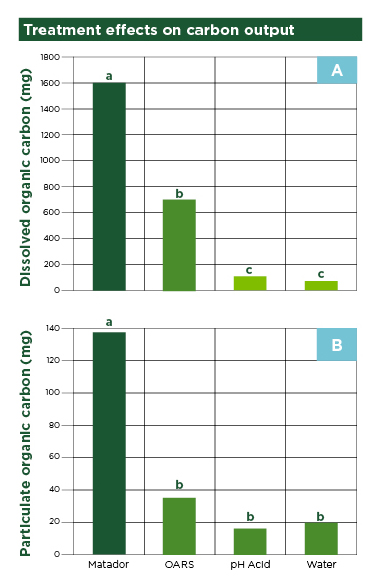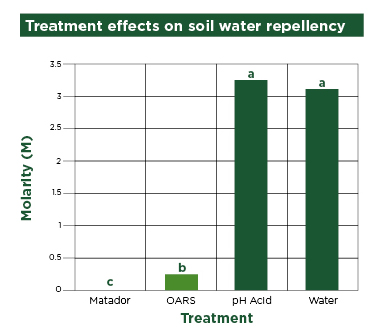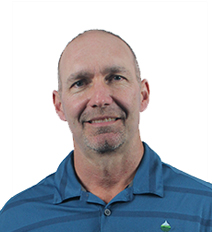Do some wetting agents remove organic coatings from water repellent sand particles? The University of Missouri conducted research on this topic and researchers Song, Goyne, Kremer, Anderson, and Xiong published their findings in an article in the October 2018 issue of Golf Course Management magazine. Matador was one of the wetting agents used in their study, and the results detailed interesting science explaining why Matador is so effective in helping growers manage difficult soil conditions. The following is a summary of the article.
What Causes Localized Dry Spot (Soil Hydrophobicity)?
When brown spots appear on the grass, it may be a condition the doesn’t allow water to penetrate the soil known as localized dry spot (LDS) or soil hydrophobicity. According to Song et al. (2018):
Soil hydrophobicity is believed to be caused by the formation of complex organic acids, such as humic acid and fulvic acid, which coat the surface of sand particles. These organic acids are formed during the natural decomposition of soil organic matter over time. Wetting agents that contain both hydrophobic (oil-loving) [sic] and hydrophilic (water-loving) groups in their molecules are the primary management tool for controlling soil water repellency. (p. 60)
Generally speaking, these wetting agents do not remove the organic coating, but the molecular structure allows one end to attach to the hydrophobic coating while the hydrophilic end works to hold water. Look at it as compensating and overcoming the problem and not really as a remedy.
Controlling Localized Dry Spot
Researchers, industry officials, and turf managers spend a lot of time and money on products that help control localized dry spot, and there are numerous studies pertaining to localized dry spot control with the use of surfactants. Removing the hydrophobic coating on sand particles is believed to reverse the soil water repellent condition making it easier to hold water and help eliminate localized dry spot. However, currently known methods of organic coating removal are either too expensive, too detrimental to plants or too time consuming to use.
In the turf market, some commercial compounds claim to remove organic coatings from sand particles. This study is the first to evaluate surfactants for such an effect. The objective of the research was to investigate whether selected wetting agents could remove hydrophobic organic coatings from sand surfaces.
Conducting the Experiment
To read more about the materials and methods, please reference the article. As an overview, the two wetting agents Matador and OARS, the surfactant pHAcid, and distilled, deionized water as the control were applied to a sand soil column and then three leaching events were conducted. Leachates were collected from the soil column and were tested for dissolved organic carbon and particulate (insoluble) organic carbon.
The Results and Findings About Matador

Matador was shown to clearly remove more dissolved organic carbon than water alone and more than the two other competitor products.
In terms of insoluble organic carbon, OARS and pHAcid removed basically the same about of particulate carbon as water. However, Matador washed out 6.9 times the amount of particulate organic carbon compared to just water! The research from the article concluded:
It has been reported that, even when present at a low concentration, fine particulate organic carbon significantly increases soil water repellency. Therefore, our results suggest that application of Matador followed by three sequential washes removed a substantial amount of water-insoluble organic coatings from the sand columns, which likely contributes to an improvement in wettability of the sand. (Song et al., 2018, p. 66)
Additionally, the water repellency test showed clear evidence that Matador can reverse localized dry spot. Application of Matador completely reversed the hydrophobicity of the sand and resulted in a wettable sand (Song et al., 2018, p. 66).

From this study, the results show that Matador removed the largest amount of buildup of organic coatings on sand particles, which is the cause of hydrophobicity and localized dry spot. It was also found that carrying out deep irrigation after applying Matador will likely help to remove the amount of organic coatings from the soil profile.



